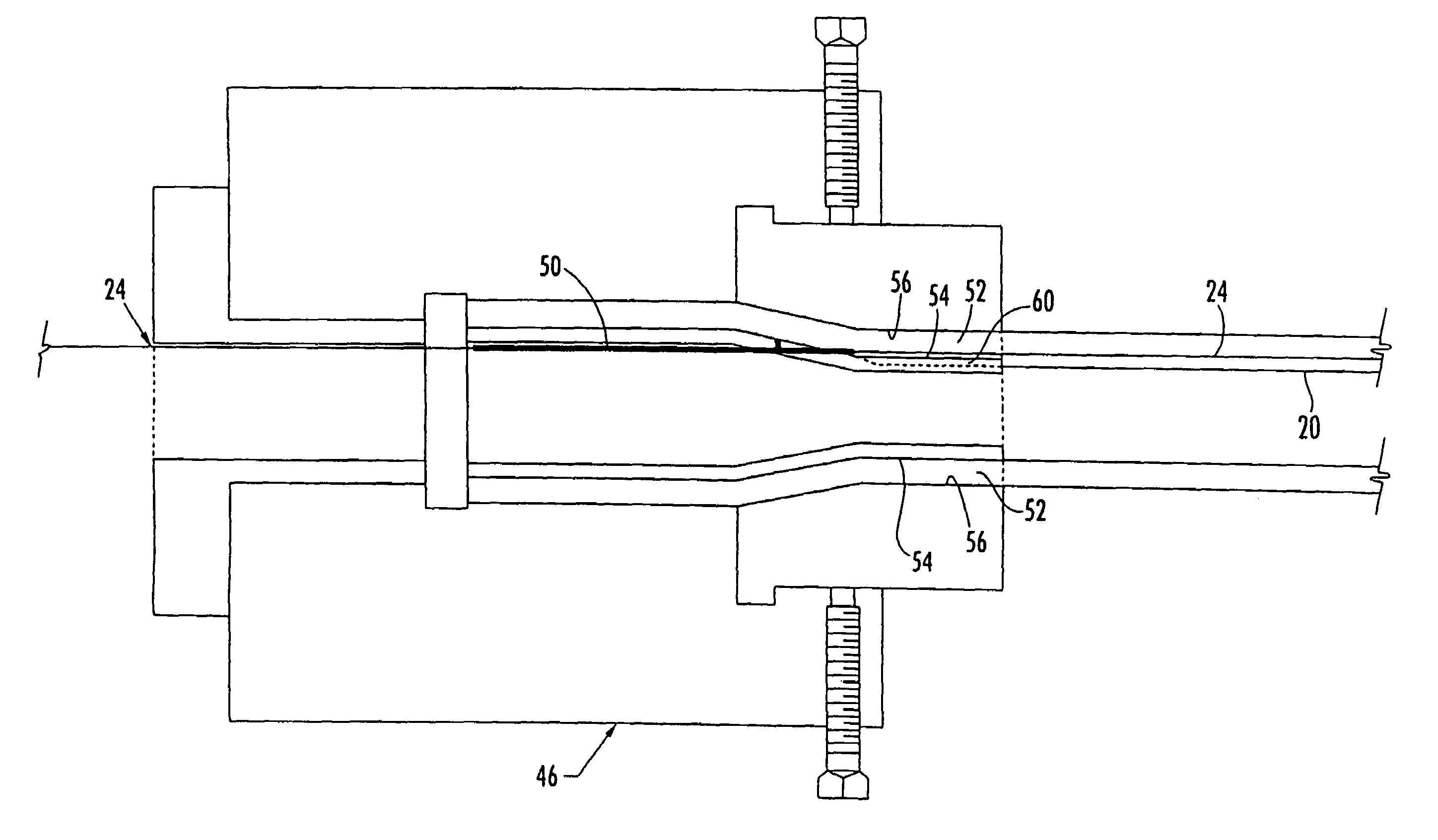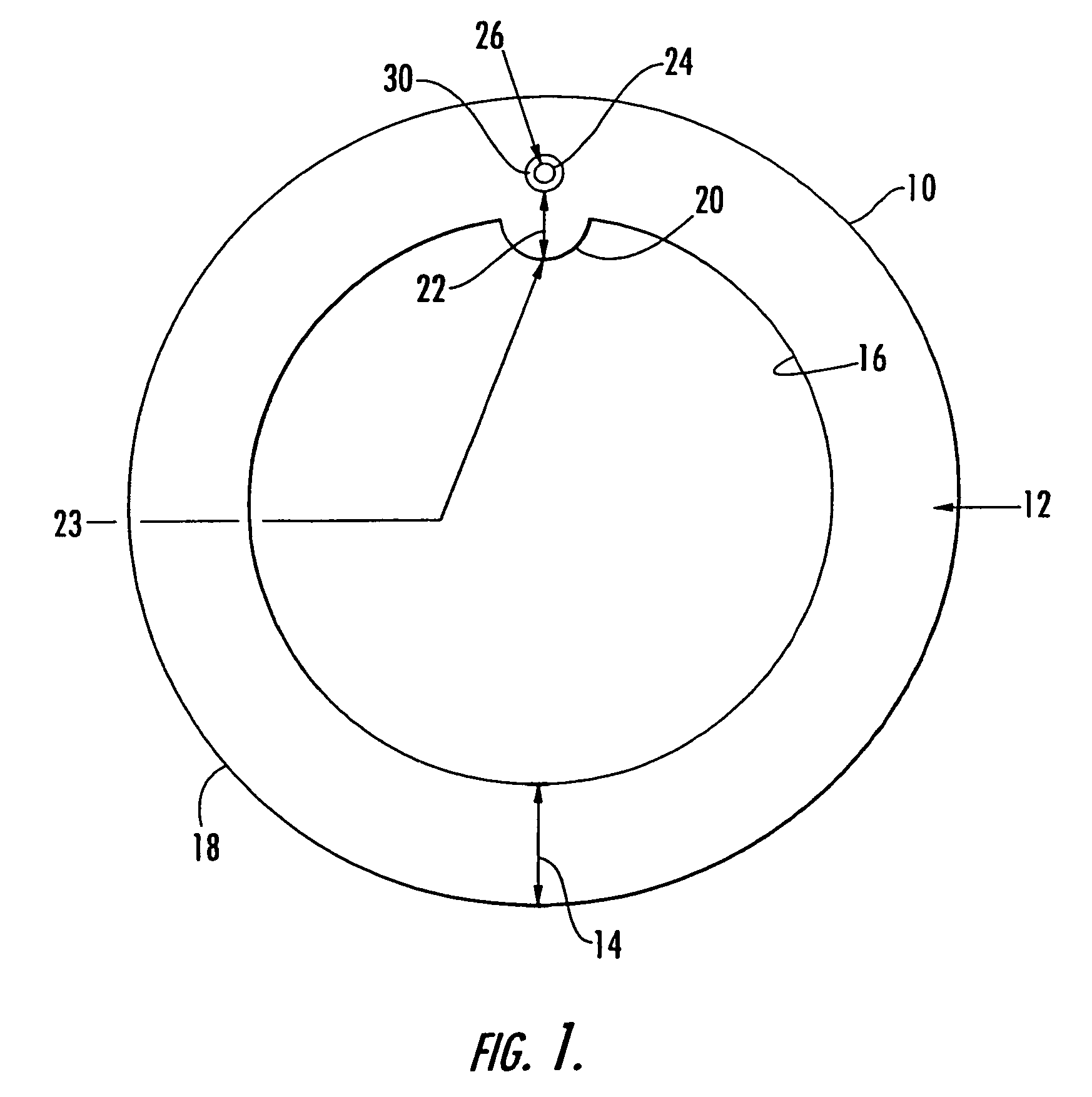Toneable conduit and method of preparing same
a technology of toneable conduits and conduits, applied in the direction of pipes, pipe elements, pipe laying and repair, etc., can solve the problems of difficult to locate underground, difficult to couple this conduit with another conduit, and inability to always locate the conduit that is buried deep underground, so as to prevent moisture leakage, prevent damage to the cable within the conduit, and detect the effect of moistur
- Summary
- Abstract
- Description
- Claims
- Application Information
AI Technical Summary
Benefits of technology
Problems solved by technology
Method used
Image
Examples
Embodiment Construction
[0023]In the drawings and the following detailed description, preferred embodiments are described in detail to enable practice of the invention. Although the invention is described with reference to these specific preferred embodiments, it will be understood that the invention is not limited to these preferred embodiments. But to the contrary, the invention includes numerous alternatives, modifications and equivalents as will become apparent from consideration of the following detailed description and accompanying drawings. In the drawings, like numbers refer to like elements throughout.
[0024]FIGS. 1 and 2 illustrate a toneable conduit according to the present invention. As shown in these figures, the conduit is formed of an elongate polymeric tube 10 that includes a wall 12 having a predetermined thickness 14 and further includes an interior surface 16 and an exterior surface 18. The exterior surface 18 is preferably smooth so that the conduit can be effectively coupled as discusse...
PUM
| Property | Measurement | Unit |
|---|---|---|
| melting temperature | aaaaa | aaaaa |
| diameter | aaaaa | aaaaa |
| diameter | aaaaa | aaaaa |
Abstract
Description
Claims
Application Information
 Login to View More
Login to View More - R&D
- Intellectual Property
- Life Sciences
- Materials
- Tech Scout
- Unparalleled Data Quality
- Higher Quality Content
- 60% Fewer Hallucinations
Browse by: Latest US Patents, China's latest patents, Technical Efficacy Thesaurus, Application Domain, Technology Topic, Popular Technical Reports.
© 2025 PatSnap. All rights reserved.Legal|Privacy policy|Modern Slavery Act Transparency Statement|Sitemap|About US| Contact US: help@patsnap.com



